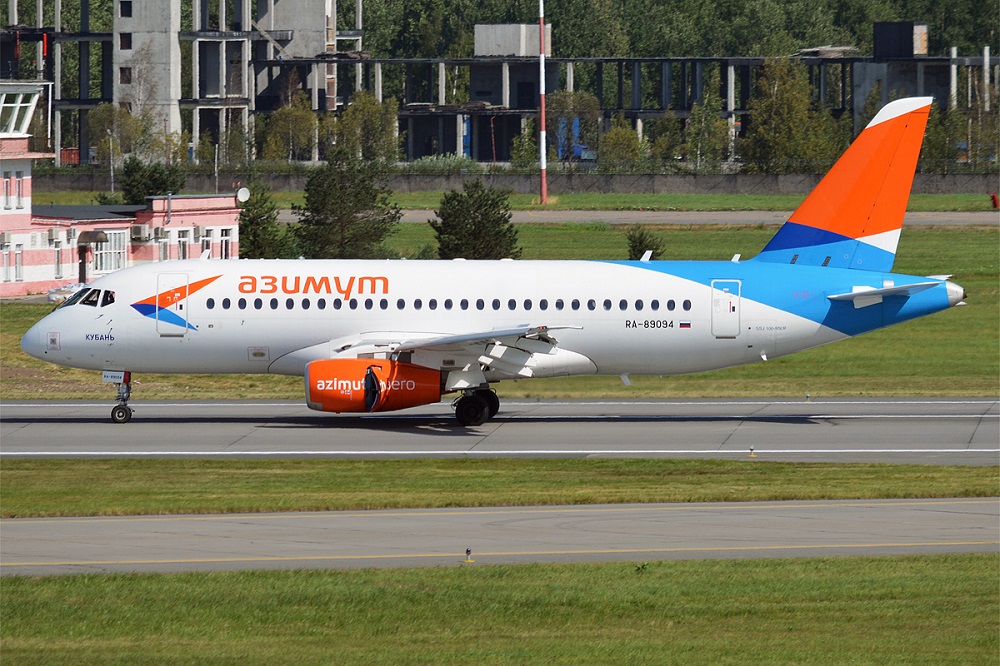Aviation
China Initiates Construction of Asia’s Biggest Aircraft Hangar, Costing $207 Million

China Eastern Airlines has embarked on a monumental endeavor with the launch of a project to build the largest aircraft hangar in Asia. As one of the top three major airlines in China, China Eastern Airlines is setting a new standard with this ambitious construction project.
Scheduled to take place between mid-2024 and the first half of 2026, the construction will be a vital component of China Eastern’s international aviation maintenance service platform project. With an estimated cost of around 1.5 billion yuan (approximately $207 million), this venture signifies a significant investment in the aviation infrastructure sector.
Once completed, the hangar’s gross floor area will surpass 110,000 square meters, boasting impressive dimensions with a 316-meter span and a 146-meter depth. This expansive facility will have the capacity to accommodate nine wide-body aircraft simultaneously for maintenance purposes, further enhancing China Eastern’s operational capabilities.
In addition to the hangars, the project will include facilities for repair, modification, and other essential infrastructures to support aircraft maintenance operations effectively.
Upon its completion, the hangar is expected to provide an impressive 1.8 million hours of aircraft maintenance services annually, reflecting China Eastern’s commitment to maintaining and servicing its fleet with the highest standards of quality and efficiency.
Furthermore, the construction of this project marks the commencement of the first of seven joint initiatives between China Eastern and Lin-gang Special Area, aiming to establish a new global aviation hub. This strategic collaboration underscores China Eastern’s vision to contribute to the development of a thriving aviation industry and strengthen its position in the global market.

Aviation
Flames on the Runway: Russian Jet Sparks Emergency in Turkey

A dramatic incident unfolded at Turkey’s Antalya Airport on Sunday night when a Russian passenger plane caught fire shortly after landing.
The Azimuth Airlines Sukhoi Superjet 100, arriving from Sochi International Airport in Russia, was carrying 89 passengers and six crew members. Thankfully, all onboard were safely evacuated without any injuries reported.
Air India to Launch aircraft maintenance training institute in Bengaluru
The fire broke out after the aircraft landed at 9:34 p.m. local time, prompting the pilot to issue an emergency call. Evacuation footage shared by Russian media site ЧП Сочи captured the tense moments as passengers slid down emergency slides, with some seen carrying large pieces of luggage despite the urgency of the situation.
Investigators at the time highlighted the critical impact of passengers retrieving their belongings, which obstructed others from escaping the burning aircraft.
This country tops visa rejections in the popular Schengen countries
Although no injuries were reported this time, the episode serves as a stark reminder of the importance of prioritizing life over possessions during emergencies. Seconds can mean the difference between survival and tragedy in such situations.
In response to the incident, Turkey’s transportation ministry confirmed that efforts were underway to remove the damaged aircraft from the runway. While arrivals at Antalya Airport were temporarily suspended, departures continued from a nearby military-operated runway to minimize disruptions.
The cause of the fire is yet to be determined, but the swift evacuation ensured a safe outcome for everyone on board.
-

 Aviation2 months ago
Aviation2 months agoMicrosoft Flight Simulator Raises $3 Million to Bring Back the An-225 Mriya
-

 Airlines2 months ago
Airlines2 months agoQatar Citizens Can Travel to the United States Without a Visa
-

 Aviation2 months ago
Aviation2 months agoQatar Airways bans these new Electronic Devices on plane
-

 Airlines2 months ago
Airlines2 months agoJapan Airlines Rolls Out Free Domestic Flights to International Passengers
-

 Defence2 months ago
Defence2 months agoWhich Country Has the Largest Fleet of Fighter Aircraft?
-

 Airport2 months ago
Airport2 months agoWestern Sydney Airport Welcomes Its First Plane After 6 Years of construction
-

 Travel2 months ago
Travel2 months agoQatar Airways Launches Four Additional Flights from Amsterdam
-

 Aviation2 months ago
Aviation2 months agoDid you know ? Once Boeing 747 carried 1088 passenger in 1991








